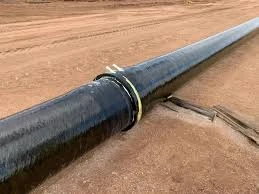
-
 Afrikaans
Afrikaans -
 Albanian
Albanian -
 Amharic
Amharic -
 Arabic
Arabic -
 Armenian
Armenian -
 Azerbaijani
Azerbaijani -
 Basque
Basque -
 Belarusian
Belarusian -
 Bengali
Bengali -
 Bosnian
Bosnian -
 Bulgarian
Bulgarian -
 Catalan
Catalan -
 Cebuano
Cebuano -
 China
China -
 China (Taiwan)
China (Taiwan) -
 Corsican
Corsican -
 Croatian
Croatian -
 Czech
Czech -
 Danish
Danish -
 Dutch
Dutch -
 English
English -
 Esperanto
Esperanto -
 Estonian
Estonian -
 Finnish
Finnish -
 French
French -
 Frisian
Frisian -
 Galician
Galician -
 Georgian
Georgian -
 German
German -
 Greek
Greek -
 Gujarati
Gujarati -
 Haitian Creole
Haitian Creole -
 hausa
hausa -
 hawaiian
hawaiian -
 Hebrew
Hebrew -
 Hindi
Hindi -
 Miao
Miao -
 Hungarian
Hungarian -
 Icelandic
Icelandic -
 igbo
igbo -
 Indonesian
Indonesian -
 irish
irish -
 Italian
Italian -
 Japanese
Japanese -
 Javanese
Javanese -
 Kannada
Kannada -
 kazakh
kazakh -
 Khmer
Khmer -
 Rwandese
Rwandese -
 Korean
Korean -
 Kurdish
Kurdish -
 Kyrgyz
Kyrgyz -
 Lao
Lao -
 Latin
Latin -
 Latvian
Latvian -
 Lithuanian
Lithuanian -
 Luxembourgish
Luxembourgish -
 Macedonian
Macedonian -
 Malgashi
Malgashi -
 Malay
Malay -
 Malayalam
Malayalam -
 Maltese
Maltese -
 Maori
Maori -
 Marathi
Marathi -
 Mongolian
Mongolian -
 Myanmar
Myanmar -
 Nepali
Nepali -
 Norwegian
Norwegian -
 Norwegian
Norwegian -
 Occitan
Occitan -
 Pashto
Pashto -
 Persian
Persian -
 Polish
Polish -
 Portuguese
Portuguese -
 Punjabi
Punjabi -
 Romanian
Romanian -
 Russian
Russian -
 Samoan
Samoan -
 Scottish Gaelic
Scottish Gaelic -
 Serbian
Serbian -
 Sesotho
Sesotho -
 Shona
Shona -
 Sindhi
Sindhi -
 Sinhala
Sinhala -
 Slovak
Slovak -
 Slovenian
Slovenian -
 Somali
Somali -
 Spanish
Spanish -
 Sundanese
Sundanese -
 Swahili
Swahili -
 Swedish
Swedish -
 Tagalog
Tagalog -
 Tajik
Tajik -
 Tamil
Tamil -
 Tatar
Tatar -
 Telugu
Telugu -
 Thai
Thai -
 Turkish
Turkish -
 Turkmen
Turkmen -
 Ukrainian
Ukrainian -
 Urdu
Urdu -
 Uighur
Uighur -
 Uzbek
Uzbek -
 Vietnamese
Vietnamese -
 Welsh
Welsh -
 Bantu
Bantu -
 Yiddish
Yiddish -
 Yoruba
Yoruba -
 Zulu
Zulu
Innovative Techniques for Utilizing Mandrels in Modern Manufacturing Processes
The Versatility of Mandrels Essential Tools in Engineering and Manufacturing
Mandrels are indispensable tools in various industries, particularly in engineering and manufacturing. They serve as a support or fixture in processes that require precise shaping, holding, or alignment of objects. Their versatility and functionality make them crucial in tasks ranging from metalworking to woodworking, aerospace, and even in the production of composite materials.
A mandrel is defined as a cylindrical tool used to shape or support workpieces during machining processes. They can be found in a variety of forms, including solid bars, tubes, or specialized fixtures designed for specific applications. The importance of mandrels lies in their ability to maintain the workpiece's integrity while allowing for the application of tools and equipment needed to shape it. This ensures a higher degree of accuracy and a better finish on the final product.
One of the most common applications of mandrels is in the field of metalworking. For instance, during the production of pipes and tubes, a mandrel can be inserted into the hollow section of the material. This setup prevents distortion or collapse of the workpiece under the pressures and forces exerted during processes like bending, rolling, or welding. Mandrels are often made from high-strength materials such as steel, which enables them to withstand significant stress and wear during operations.
In woodworking, mandrels are employed to create precise shapes and profiles. They can support pieces of wood during sanding or shaping processes, ensuring uniform thickness and preventing the wood from splintering or cracking. Woodworkers use mandrels to fit parts together accurately, enhancing the quality of furniture and other wooden products.
mandrel

The aerospace industry also leverages mandrels in the fabrication of components. For example, when constructing aircraft wings or fuselage sections, mandrels are utilized to ensure that the composite materials are laid up uniformly. The mandrel provides the necessary structure to hold the components in place while being cured, resulting in parts that are not only lightweight but also incredibly strong. This application highlights how mandrels contribute to advances in technology and design efficiency in high-demand sectors.
Moreover, the adaptability of mandrels extends beyond basic functionality. They can be customized for specific applications, allowing manufacturers to modify their shapes or dimensions to fit particular requirements. For example, custom mandrels can be designed for unique component geometries, ensuring a tighter fit and minimizing the likelihood of defects during manufacturing.
In addition to their practical applications, mandrels also play a significant role in improving productivity. By facilitating rapid changeover and setup times, they allow operators to switch between different tasks with minimal downtime. This aspect is particularly beneficial in batch production systems, where efficiency and speed are critical to meeting production goals and fulfilling customer orders.
Despite their robust utility, maintaining mandrels is essential for optimal performance. Regular inspections for wear and tear, coupled with proper cleaning and storage practices, contribute to their longevity and effectiveness. An well-maintained mandrel not only improves production quality but also reduces costs associated with tool replacement and repairs.
In conclusion, mandrels are vital tools that have a profound impact on various sectors, particularly in engineering and manufacturing. Their ability to offer support, shape, and align objects makes them essential in creating high-quality products. As technology advances, the role of mandrels will continue to evolve, adapting to new materials and processes that demand precision and efficiency. Understanding and utilizing mandrels effectively can greatly enhance productivity and quality in any manufacturing operation, making them an essential component of the modern industrial toolkit.









